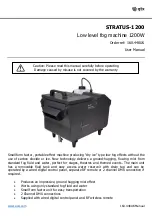
19
THEORY OF OPERATION
'
A facsimile machine enables an exact copy of a document to be produced at a remote location.
It incorporates three main devices:
-
a scanner
This is the device that optically scans the page containing data, text and/or images, to be
transmitted. The page is illuminated by a series of LEDs (Light Emission Diode) and the
reflected light rays, whose intensity will depend on whether the area struck contains a mark
or is empty, are captured by sensors that convert them into electrical signals. These signals
are then coded using internationally recognized standards. The coded image is "compressed"
(in other words, the black and white sequences are "shortened", representing them with a
single code that indicates their length and position) to save space in the memory and reduce
the time required for transmission.
-
a printer
As its name suggests, this device is used for printing documents. Many different printing
techniques are used. Your facsimile machine is based on Bubble Ink Jet technology, which
uses a print head fitted with a series of nozzles which "fire" microscopic particles of ink onto
the paper, reproducing the exact image of the document read by the sender's scanner. One
of the main advantages of your facsimile machine is that you can print on plain paper, which
does not roll up like the thermal paper commonly used by other facsimile machines available
on the market, and costs much less.
-
a modem
This component enables you to connect to the telephone line and exchange data with remote
devices. The various integrated circuits it contains convert binary signals (sequences of 1's
and 0's) into analog signals (i.e. variable electrical voltages) and vice versa. The communication
process is regulated on an international scale by "protocols" which represent, for electronic
devices, the equivalent of the various languages spoken. This facsimile machine uses the
Half Duplex protocol and can send and receive data at various speeds, from 2400 to 14400
bps (bits per second).
In addition to these main devices, the machine is also equipped with other functional elements
that enable it to:
-
receive user commands (the console)
-
indicate the status of operations in progress and display the data entered (the display)
-
feed in the original documents to be sent (ADF - Automatic Document Feeder)
-
feed the paper on which the documents are printed (paper cassette and ASF - Automatic
Sheet Feeder)
-
communicate with a personal computer (parallel interface).
Special mention must be made of the memory. It consists of electronic chips used for storing data.
The memory is divided into two main areas: the
data memory, which basically contains the data
relating to the machine's set-up and adjustment, and the
document memory, used for storing the
original documents to be sent or copied or those received (70 pages*). The data stored is retained
for several hours, even in the event of a power failure. The main advantage of the memory is that
it enables several operations to be carried out at the same time. For example, you can set a
transmission transaction while receiving a document, or print a file from the PC and send a stored
document at the same time.
*
ITU-TS format , Test Sheet n° 1 (Slerexe Letter) in standard resolution and MH compression mode.
Содержание OFX 3200
Страница 1: ...AcSIMILE 8 3 NSTRUCTIONS...
Страница 11: ...INSTALLING YOUR FACSIMILE MACHINE AND GETTING STARTED QUICKLY...
Страница 29: ...GETTING THE BEST FROM YOUR FACSIMILE MACHINE...
Страница 49: ...THE PROCEDURES...
















































